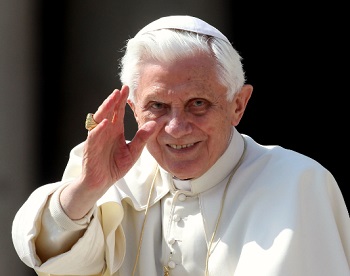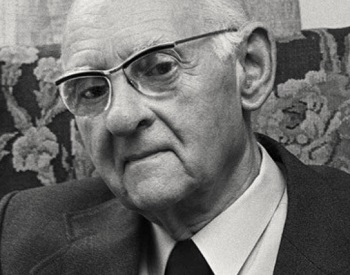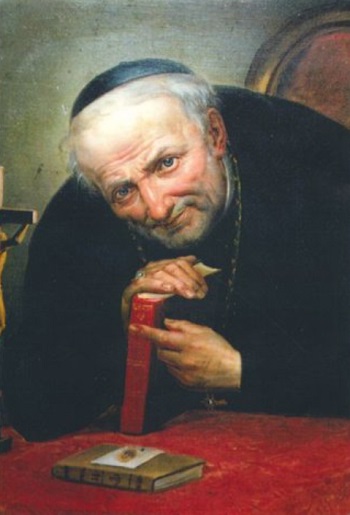Asuntos Tradicionalistas
 |
 |
 |
 |
 |
 |
 |
Misa Dialogada - CXXXVI
Manuales ardientes:
el conocimiento de la fe bajo ataque
Siempre que consideramos las diversas oleadas de daños infligidos a la Iglesia por los revolucionarios a lo largo de su historia, tendemos a pensar en términos de bienes inmuebles, como catedrales, monasterios e iglesias parroquiales, o los atavíos de los rituales religiosos, como vestimentas, cálices, etc. – y es comprensible, como escribió Maurice Barrès, miembro de la Académie Française, en 1914:
“Nuestras iglesias se encuentran entre los mayores tesoros de la civilización. Los hemos recibido de nuestros antepasados; tenemos el deber de transmitirlos a nuestros descendientes; no debemos dejarnos confundir por quienes los declaran inútiles.”1
Estas palabras son, por supuesto, evidentemente ciertas, pero es necesario repetirlas nuevamente en nuestros tiempos, cuando las diócesis están vendiendo o demoliendo iglesias declaradas “inútiles” a un ritmo que rivaliza o incluso supera los esfuerzos destructivos de los revolucionarios en cualquier momento dado de la historia. Historia.
 Pero rara vez se hace mención de las partes más intangibles de nuestra herencia espiritual que han sufrido los estragos de fuerzas hostiles, es decir, el depósito de conocimiento de la Fe que ha estado con nosotros desde el comienzo del cristianismo. Este conocimiento, llamado Depósito de la Fe, ha sido atacado por los propios líderes de la Iglesia desde el Vaticano II. Su forma escrita se encuentra en diversas fuentes publicadas e inéditas, como las colecciones de manuscritos, códices, Actas de los Mártires, Actas de los Papas y Concilios, libros litúrgicos, Escrituras, escritos de los Padres de la Iglesia, catecismos para los laicos y Manuales. para seminaristas y sacerdotes. Todos habían sido atesorados y preservados como recursos vitales para transmitir el conocimiento de la Fe de una generación a la siguiente.
Pero rara vez se hace mención de las partes más intangibles de nuestra herencia espiritual que han sufrido los estragos de fuerzas hostiles, es decir, el depósito de conocimiento de la Fe que ha estado con nosotros desde el comienzo del cristianismo. Este conocimiento, llamado Depósito de la Fe, ha sido atacado por los propios líderes de la Iglesia desde el Vaticano II. Su forma escrita se encuentra en diversas fuentes publicadas e inéditas, como las colecciones de manuscritos, códices, Actas de los Mártires, Actas de los Papas y Concilios, libros litúrgicos, Escrituras, escritos de los Padres de la Iglesia, catecismos para los laicos y Manuales. para seminaristas y sacerdotes. Todos habían sido atesorados y preservados como recursos vitales para transmitir el conocimiento de la Fe de una generación a la siguiente.
Nos centraremos ahora en los Manuales elaborados a finales del siglo XIX y principios del XX, ya que son una destilación de la auténtica enseñanza magisterial de la Iglesia, tanto escrita como oral. Evidentemente, por eso fueron objeto de ataque por parte de los reformadores progresistas. Aquí sólo se considerarán aquellos Manuales autorizados por la Jerarquía, no las teorías individuales de autores individuales que se encuentran en algunos libros de texto. Nos preocupamos únicamente por la enseñanza unánime de los teólogos escolásticos que se encuentran en estos Manuales que ahora se consideran "decadentes".
Cuando Sir Thomas Bodley fundó la Biblioteca Bodleian en la década de 1590, rescatando, entre otras cosas, el contenido de las bibliotecas monásticas que habían sido destruidas por Enrique VIII, Francis Bacon la describió como “un arca para salvar el aprendizaje del diluvio” – mediante el cual se refería a los efectos de la Reforma Protestante. Desde entonces, la Iglesia ha estado sufriendo este y otros diluvios, en particular el provocado por la Revolución Francesa. Pero ninguno fue tan devastador como el tsunami de reformas relacionadas con el Vaticano II que inundaron el panorama eclesiástico y pusieron patas arriba a la Iglesia institucional.
El “control del pensamiento”, como sabemos por las actividades de los comunistas y sus simpatizantes en el siglo XX, fue el dispositivo mediante el cual los revolucionarios destruyeron el conocimiento verdadero basado en evidencia objetiva e influyeron en las masas para que aceptaran como verdadero cualquier cosa que el Partido en el poder quisiera que creyeran. Todas las pruebas muestran que este dispositivo estaba vivo y coleando en el Vaticano II. Fue utilizado por un grupo de teólogos modernistas incluso antes del Concilio para identificar los Manuales, los portadores del cuerpo de doctrina expresado en términos escolásticos, como un obstáculo para la transformación imaginada del "Pueblo de Dios" y un impedimento para el "progreso". “Hacia la utopía deseada. Un resultado lógico de esta posición revolucionaria fue la inclusión de la propia Tradición de la Iglesia como enemiga de la causa progresista.
Todo esto explica por qué la teología moral y dogmática tradicional de la Iglesia llegó a ser considerada “intransigente” y rutinariamente atacada como “rígida”. Los teólogos progresistas antes y después del Vaticano II querían reformular la fe para hacerla compatible con las sensibilidades seculares modernas. Entre los que se oponían firmemente a la largamente venerada “tradición manualista” se encontraba el grupo de teólogos que más tarde fundaron las revistas internacionales Concilium (1965): Hans Küng, Yves Congar, Johann Baptist Metz y Edward Schillebeeckx) y Communio (1972): Joseph Ratzinger, Henri de Lubac y Urs von Balthasar. (A ellos podemos agregar su padre espiritual, fallecido hace mucho tiempo, George Tyrrell).

 Su oposición fue bien recibida en el Vaticano II, que favorecía una visión liberal de la fe compatible con el pluralismo religioso y el relativismo moral. Esto desafió e implícitamente negó el carácter absoluto del dogma y la ley moral católicos. Como resultado, los seminaristas recibieron carta blanca para criticar a la Iglesia en sus instituciones, clero, liturgia, devociones y tradiciones, lo que les hacía imposible sentire cum Ecclesia. (pensar con la Iglesia).
Su oposición fue bien recibida en el Vaticano II, que favorecía una visión liberal de la fe compatible con el pluralismo religioso y el relativismo moral. Esto desafió e implícitamente negó el carácter absoluto del dogma y la ley moral católicos. Como resultado, los seminaristas recibieron carta blanca para criticar a la Iglesia en sus instituciones, clero, liturgia, devociones y tradiciones, lo que les hacía imposible sentire cum Ecclesia. (pensar con la Iglesia).
Monumentos de tradición
Para entender qué pasó con los Manuales que eran un elemento básico de la formación en los seminarios anteriores al Vaticano II, necesitamos saber qué eran estos Manuales ahora olvidados y por qué la Iglesia los había considerado indispensables para la formación de los sacerdotes.
Sin embargo, antes de continuar es necesario hacer una observación importante. Estos Manuales aprobados pertenecían a la tradición centenaria del Escolasticismo que explicaba las enseñanzas de la Iglesia en el área de la teología dogmática y moral de una manera sistemática y lógica, haciéndolas inteligibles para los estudiantes serios. El atractivo y la credibilidad de la fe católica se vieron así realzados por la demostración de su armonía con la razón y la sana filosofía.
Contrariamente a las absurdas acusaciones hechas por sus detractores, los Manuales nunca fueron considerados como un marco teórico global que afirma saberlo todo sobre la mente de Dios y resume la omnisciencia divina en unas pocas frases claras (silogismos). Los conocimientos contenidos en ellos se consideraban sólo el mínimo imprescindible que debía poseer cualquier sacerdote-teólogo antes de dedicarse a una investigación o poner un pie en el púlpito o en la sala de conferencias.
Otro punto importante a favor de la aceptabilidad de los Manuales fue que sus autores eran hombres de notable piedad y erudición que realmente enseñaban en los seminarios. El contenido de sus cursos se basó en el trabajo de eminentes teólogos como Santo Tomás de Aquino y San Alfonso de Ligorio, por nombrar dos de los más grandes. Se puede decir que los Manuales fueron fundamentales para llevar el trabajo de estas luminarias al siglo XX.
El propio Papa Pío XII enseñó esto en su encíclica de 1950 Humani generis:
“Descuidar o rechazar [cosas] que en muchos casos han sido concebidas, expresadas y perfeccionadas después de un largo trabajo, por hombres de genio y santidad extraordinarios, bajo la atenta mirada del santo Magisterio, y no sin la luz y guía del Espíritu Santo para la expresión cada vez más precisa de las verdades de fe, de modo que en su lugar puedan ser sustituidas nociones conjeturales, así como ciertas expresiones inestables y vagas de una nueva filosofía, que existe como una flor del campo. hoy y morirá mañana: no sólo es la más alta imprudencia, sino que también convierte al dogma mismo en una caña sacudida por el viento.”
 Estos Manuales fueron elogiados sucesivamente por siglos de Papas anteriores al Vaticano II. Y los obispos aseguraron su uso para la formación de sacerdotes en sus diócesis porque ejemplificaban la enseñanza magisterial de la Iglesia en la fe y la moral. Dieron, por tanto, una base sólida en la filosofía y teología católicas. Por estas razones, la auténtica “tradición manualista” fue reconocida como guía segura para la doctrina católica hasta el Vaticano II.
Estos Manuales fueron elogiados sucesivamente por siglos de Papas anteriores al Vaticano II. Y los obispos aseguraron su uso para la formación de sacerdotes en sus diócesis porque ejemplificaban la enseñanza magisterial de la Iglesia en la fe y la moral. Dieron, por tanto, una base sólida en la filosofía y teología católicas. Por estas razones, la auténtica “tradición manualista” fue reconocida como guía segura para la doctrina católica hasta el Vaticano II.
Es significativo que San Alfonso, de quien los Manuales anteriores al Vaticano II derivan gran parte de su contenido, fuera declarado por el Papa Pío XII “el patrono celestial tanto de los confesores como de los teólogos morales”.2 La relevancia y el valor de los Manuales en la vida pastoral surgen del hecho de que contienen la clave interpretativa para juzgar las cuestiones de la moral católica en cualquier época; de ahí su continua utilidad en el confesionario de nuestros tiempos. (A ningún sacerdote formado en la “tradición manualista” se le ocurriría decir, con el Papa Francisco: “¿Quién soy yo para juzgar?”)
No se puede negar que sin la “tradición manualista” se han producido ciertas consecuencias negativas para la transmisión de la fe en su totalidad, para la vida moral de los fieles, tanto clericales como laicos, y para la evangelización de quienes están fuera de la Iglesia.
Primero, el consenso general que alguna vez prevaleció entre los obispos y fue una sólida garantía de unidad simplemente se fragmentó en innumerables “posiciones” sobre cuestiones doctrinales y morales.
En segundo lugar, la idea de lo que constituye un pecado objetivamente grave ahora se ha perdido de vista en general, al igual que el concepto de condenación eterna.
En tercer lugar, esto ha llevado al abuso sacrílego cada vez más extendido del confesionario con el fin de admitir a divorciados vueltos a casar a la Sagrada Comunión sin ningún propósito de enmienda.
Cuarto, la falta de una guía “manualista” ha permitido no sólo la subversión de la Constitución de la Iglesia, sino también el colapso de las Misiones y la falsa relación de la Iglesia con el mundo moderno propuesta por el Vaticano II.
Continuará ...

“Nuestras iglesias se encuentran entre los mayores tesoros de la civilización. Los hemos recibido de nuestros antepasados; tenemos el deber de transmitirlos a nuestros descendientes; no debemos dejarnos confundir por quienes los declaran inútiles.”1
Estas palabras son, por supuesto, evidentemente ciertas, pero es necesario repetirlas nuevamente en nuestros tiempos, cuando las diócesis están vendiendo o demoliendo iglesias declaradas “inútiles” a un ritmo que rivaliza o incluso supera los esfuerzos destructivos de los revolucionarios en cualquier momento dado de la historia. Historia.

Las tradiciones de la Europa católica son los tesoros de la Historia; arriba, Catedral de Chartres
Nos centraremos ahora en los Manuales elaborados a finales del siglo XIX y principios del XX, ya que son una destilación de la auténtica enseñanza magisterial de la Iglesia, tanto escrita como oral. Evidentemente, por eso fueron objeto de ataque por parte de los reformadores progresistas. Aquí sólo se considerarán aquellos Manuales autorizados por la Jerarquía, no las teorías individuales de autores individuales que se encuentran en algunos libros de texto. Nos preocupamos únicamente por la enseñanza unánime de los teólogos escolásticos que se encuentran en estos Manuales que ahora se consideran "decadentes".
Cuando Sir Thomas Bodley fundó la Biblioteca Bodleian en la década de 1590, rescatando, entre otras cosas, el contenido de las bibliotecas monásticas que habían sido destruidas por Enrique VIII, Francis Bacon la describió como “un arca para salvar el aprendizaje del diluvio” – mediante el cual se refería a los efectos de la Reforma Protestante. Desde entonces, la Iglesia ha estado sufriendo este y otros diluvios, en particular el provocado por la Revolución Francesa. Pero ninguno fue tan devastador como el tsunami de reformas relacionadas con el Vaticano II que inundaron el panorama eclesiástico y pusieron patas arriba a la Iglesia institucional.
El “control del pensamiento”, como sabemos por las actividades de los comunistas y sus simpatizantes en el siglo XX, fue el dispositivo mediante el cual los revolucionarios destruyeron el conocimiento verdadero basado en evidencia objetiva e influyeron en las masas para que aceptaran como verdadero cualquier cosa que el Partido en el poder quisiera que creyeran. Todas las pruebas muestran que este dispositivo estaba vivo y coleando en el Vaticano II. Fue utilizado por un grupo de teólogos modernistas incluso antes del Concilio para identificar los Manuales, los portadores del cuerpo de doctrina expresado en términos escolásticos, como un obstáculo para la transformación imaginada del "Pueblo de Dios" y un impedimento para el "progreso". “Hacia la utopía deseada. Un resultado lógico de esta posición revolucionaria fue la inclusión de la propia Tradición de la Iglesia como enemiga de la causa progresista.
Todo esto explica por qué la teología moral y dogmática tradicional de la Iglesia llegó a ser considerada “intransigente” y rutinariamente atacada como “rígida”. Los teólogos progresistas antes y después del Vaticano II querían reformular la fe para hacerla compatible con las sensibilidades seculares modernas. Entre los que se oponían firmemente a la largamente venerada “tradición manualista” se encontraba el grupo de teólogos que más tarde fundaron las revistas internacionales Concilium (1965): Hans Küng, Yves Congar, Johann Baptist Metz y Edward Schillebeeckx) y Communio (1972): Joseph Ratzinger, Henri de Lubac y Urs von Balthasar. (A ellos podemos agregar su padre espiritual, fallecido hace mucho tiempo, George Tyrrell).

Ratzinger y Balthasar, dos teólogos decididos a quemar hasta los libros de las viejas costumbres

Monumentos de tradición
Para entender qué pasó con los Manuales que eran un elemento básico de la formación en los seminarios anteriores al Vaticano II, necesitamos saber qué eran estos Manuales ahora olvidados y por qué la Iglesia los había considerado indispensables para la formación de los sacerdotes.
Sin embargo, antes de continuar es necesario hacer una observación importante. Estos Manuales aprobados pertenecían a la tradición centenaria del Escolasticismo que explicaba las enseñanzas de la Iglesia en el área de la teología dogmática y moral de una manera sistemática y lógica, haciéndolas inteligibles para los estudiantes serios. El atractivo y la credibilidad de la fe católica se vieron así realzados por la demostración de su armonía con la razón y la sana filosofía.
Contrariamente a las absurdas acusaciones hechas por sus detractores, los Manuales nunca fueron considerados como un marco teórico global que afirma saberlo todo sobre la mente de Dios y resume la omnisciencia divina en unas pocas frases claras (silogismos). Los conocimientos contenidos en ellos se consideraban sólo el mínimo imprescindible que debía poseer cualquier sacerdote-teólogo antes de dedicarse a una investigación o poner un pie en el púlpito o en la sala de conferencias.
Otro punto importante a favor de la aceptabilidad de los Manuales fue que sus autores eran hombres de notable piedad y erudición que realmente enseñaban en los seminarios. El contenido de sus cursos se basó en el trabajo de eminentes teólogos como Santo Tomás de Aquino y San Alfonso de Ligorio, por nombrar dos de los más grandes. Se puede decir que los Manuales fueron fundamentales para llevar el trabajo de estas luminarias al siglo XX.
El propio Papa Pío XII enseñó esto en su encíclica de 1950 Humani generis:
“Descuidar o rechazar [cosas] que en muchos casos han sido concebidas, expresadas y perfeccionadas después de un largo trabajo, por hombres de genio y santidad extraordinarios, bajo la atenta mirada del santo Magisterio, y no sin la luz y guía del Espíritu Santo para la expresión cada vez más precisa de las verdades de fe, de modo que en su lugar puedan ser sustituidas nociones conjeturales, así como ciertas expresiones inestables y vagas de una nueva filosofía, que existe como una flor del campo. hoy y morirá mañana: no sólo es la más alta imprudencia, sino que también convierte al dogma mismo en una caña sacudida por el viento.”

San Alfonso de Ligorio escribió algunos
de los manuales de fe más sólidos
Es significativo que San Alfonso, de quien los Manuales anteriores al Vaticano II derivan gran parte de su contenido, fuera declarado por el Papa Pío XII “el patrono celestial tanto de los confesores como de los teólogos morales”.2 La relevancia y el valor de los Manuales en la vida pastoral surgen del hecho de que contienen la clave interpretativa para juzgar las cuestiones de la moral católica en cualquier época; de ahí su continua utilidad en el confesionario de nuestros tiempos. (A ningún sacerdote formado en la “tradición manualista” se le ocurriría decir, con el Papa Francisco: “¿Quién soy yo para juzgar?”)
No se puede negar que sin la “tradición manualista” se han producido ciertas consecuencias negativas para la transmisión de la fe en su totalidad, para la vida moral de los fieles, tanto clericales como laicos, y para la evangelización de quienes están fuera de la Iglesia.
Primero, el consenso general que alguna vez prevaleció entre los obispos y fue una sólida garantía de unidad simplemente se fragmentó en innumerables “posiciones” sobre cuestiones doctrinales y morales.
En segundo lugar, la idea de lo que constituye un pecado objetivamente grave ahora se ha perdido de vista en general, al igual que el concepto de condenación eterna.
En tercer lugar, esto ha llevado al abuso sacrílego cada vez más extendido del confesionario con el fin de admitir a divorciados vueltos a casar a la Sagrada Comunión sin ningún propósito de enmienda.
Cuarto, la falta de una guía “manualista” ha permitido no sólo la subversión de la Constitución de la Iglesia, sino también el colapso de las Misiones y la falsa relación de la Iglesia con el mundo moderno propuesta por el Vaticano II.
Continuará ...
- Maurice Barrès, La Grande Pitié des Églises de France (The Tragic Situation of the French Churches), Paris: Émile-Paul Frères, 1914, p. 19.
- Pius XII, Apostolic Brief of April 26, 1950
Publicado el 14 de marzo de 2024

______________________
______________________
 Volume I |
 Volume II |
 Volume III |
 Volume IV |
 Volume V |
 Volume VI |
 Volume VII |
 Volume VIII |
 Volume IX |
 Volume X |
 Volume XI |
 Special Edition |






